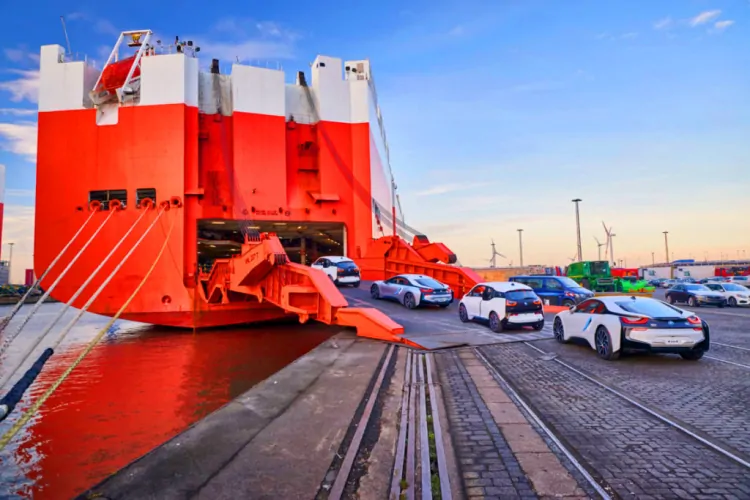Top 5 Mistakes to Avoid When Shipping a Car from the UK to Australia
shipping a car from the UK to Australia

Shipping a car from the UK to Australia can be a complex and costly process, with many potential pitfalls for those who are unfamiliar with the regulations, logistics, and paperwork involved.
Whether you’re relocating or simply importing a vehicle, understanding the common mistakes that others have made can help you save both time and money.
In this article, we’ll outline the top 5 mistakes to avoid when shipping a car from the UK to Australia, ensuring your car’s journey is smooth and hassle-free.
1. Not Understanding Import Regulations
One of the biggest mistakes people make when shipping a car from the UK to Australia is failing to thoroughly research the country's strict import regulations.
Australia has stringent rules governing which vehicles can be imported, especially concerning environmental and safety standards.
The Australian Department of Infrastructure and Transport imposes specific requirements, such as emissions standards and the type of modifications that may be necessary for the vehicle to be deemed roadworthy.
Before you begin the shipping process, ensure that your car meets all the necessary requirements.
Some vehicles may need modifications to comply with Australian standards, such as changing the fuel system or emissions control mechanisms.
Additionally, importing a car over a certain age may require special permission or additional inspections.
To avoid costly delays or outright rejection of your vehicle at customs, it is crucial to consult with a professional import service or review the Australian Vehicle Import Scheme (VIS) to ensure compliance.
2. Underestimating Costs Involved
Shipping a car from the UK to Australia involves more than just transportation fees.
Many people make the mistake of underestimating the full scope of costs involved in the process, which can lead to unpleasant surprises.
Shipping fees, import duties, GST (Goods and Services Tax), and customs fees can quickly add up.
Australia imposes import duties and taxes on most vehicles, calculated based on the car’s value.
As of 2024, the import duty for passenger vehicles is typically around 5%, with an additional 10% GST.
However, these rates can vary depending on the type of vehicle, its age, and whether it was previously registered in Australia.
Don’t forget to include other costs such as quarantine inspection fees, port handling charges, and delivery fees from the Australian port to your final destination.
It’s essential to get a comprehensive cost estimate before proceeding. Failing to account for these expenses can strain your budget and disrupt your plans.
Make sure to get a breakdown of all the charges from a reputable shipping company, so you know exactly what to expect.
3. Choosing the Wrong Shipping Method
There are several shipping methods available when transporting your car from the UK to Australia, and choosing the wrong one can be a costly mistake.
The two main methods are Roll-on Roll-off (RoRo) and container shipping. Each method has its pros and cons depending on your needs and budget.
-
Roll-on Roll-off (RoRo): This is the most cost-effective option and involves driving your car onto a specialised cargo ship. However, your vehicle will be exposed to the elements and other potential risks, such as damage during loading and unloading.
-
Container Shipping: A more expensive option, but your car is securely enclosed in a shipping container, offering greater protection. This method is ideal for high-value or classic cars that require extra care during transport.
Choosing the cheaper option may seem appealing, but if your vehicle is valuable or fragile, it’s worth investing in container shipping for added security.
Always weigh the risks and benefits of each shipping method before making a decision.
4. Incorrect or Incomplete Paperwork
Incorrect or incomplete paperwork is a frequent source of delays and extra fees when shipping cars internationally.
Australian customs require a significant amount of documentation, and missing even one form can result in your car being held at the port or returned to the UK.
The necessary paperwork typically includes:
-
A copy of your vehicle’s registration
-
A bill of sale or proof of ownership
-
A Vehicle Import Approval (VIA) from the Australian government
-
Customs import declarations
-
A quarantine inspection form
Additionally, cars being imported to Australia must undergo a quarantine inspection to ensure they are free of pests and dirt that could affect the environment.
This means your vehicle must be thoroughly cleaned before shipping.
Avoid costly delays by working with a reputable shipping company that can assist with all the necessary paperwork and ensure your vehicle is compliant with Australian regulations.
5. Not Using a Reputable Shipping Company
Lastly, one of the most common mistakes people make when shipping a car from the UK to Australia is choosing the wrong shipping company.
Working with a reliable and experienced shipping company is essential for a successful car import.
A reputable company will handle the logistics, provide accurate cost estimates, ensure your paperwork is in order, and keep you informed throughout the process.
They will also be able to advise you on the best shipping method and guide you through customs regulations.
Be sure to check reviews, ask for references, and compare quotes from multiple companies before making a decision.
Conclusion
Shipping a car from the UK to Australia is no small task, and avoiding these common mistakes can save you a lot of headaches.
By understanding import regulations, preparing for all associated costs, choosing the right shipping method, ensuring proper documentation, and selecting a reliable shipping company, you can navigate the process with ease.
Careful planning and attention to detail will help ensure that your car arrives safely and on time, ready to hit the Australian roads.
What's Your Reaction?















